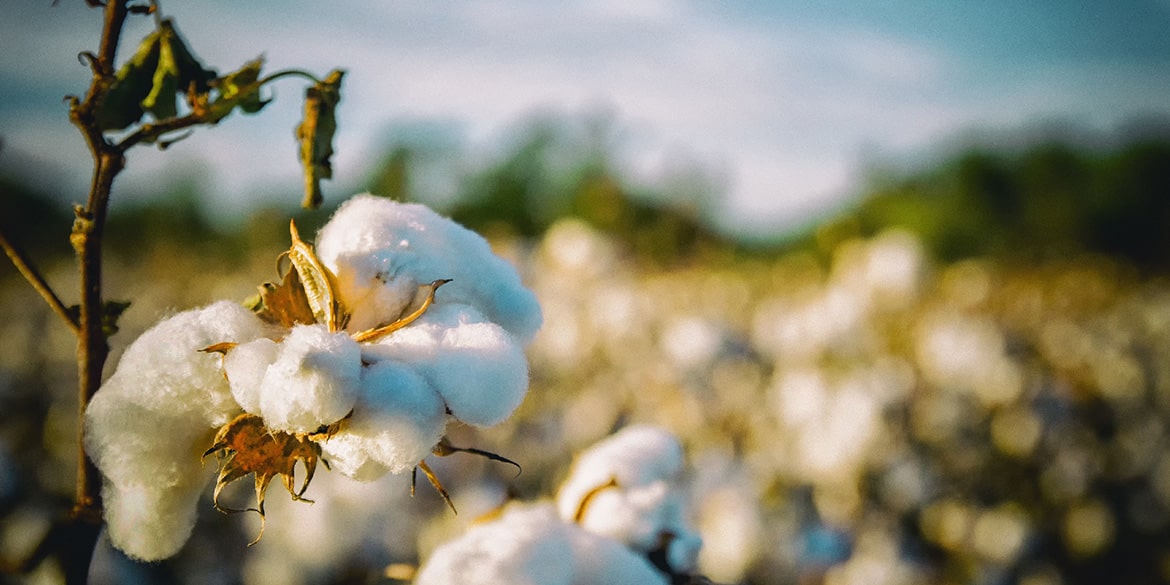THE SHORT HISTORY OF COTTON PART 2
Gossypium - known as cotton, grow up to 150 cm tall. There are many types of cotton, for the production of fabrics long fibers work best . Egyptian and Greek cotton fibers are worth mentioning in this field. The process of harvesting and later making cotton fabrics itself has evolved over the centuries. Once harvested by hand, today the process has been automated. Cotton is harvested by specially adapted harvesters. Then a ginning machine, separates the seed from the fiber to later go into a baling press. In 2001, the Joint Cotton Industry Bale Packaging Committee (JCIBPC), in accordance with US Gin Universal Density Bale standards, established the weight and dimensions that a bale of cotton should have, i.e. 217.7 kg, 54,137.2 cm long and 83.82 cm wide. That is, a bale of cotton is ultimately 0.5 m³ of pure cotton.

Cotton Field
The fibers undergo a combing process, making them soft and flexible which makes it easier to carry out further processing. This process begins the production of the actual yarn. The combing, loosening and lay-up is carried out sequentially with the help of machines: carding machines, stretching machines, splicing machines and undersizing machines. The latter produces the so-called roving on a belt, an intermediate product before the production of the actual yarn. A thread is formed from the fibers during the spinning process. It is done in specialized plants or by hand using a loom. To ensure a higher quality of the fabric it is additionally twisted. This changes the direction and size of the twist, and the stronger the twist, the finer the quality of the fabric. Dyeing and treatments to strengthen or refine the fibers are often practiced at this stage. The finishing depends on the purpose of the yarn, and it can be dried, rewound, dyed, or bleached. The final stage is the weaving workshop, where the fabric is produced. This happens in the process of interlacing perpendicular threads with each other. The weaving technique used determines the type of weave of the fabric. The completed raw fabric is finished depending on its intended use. Usually it is subjected to burning. Thanks to this, protruding threads or "fluff" resulting from mottling are removed. The material prepared in this way is ready for cutting and sewing.
Now, at this stage, the magic happens and your unique, personalized bags are created. If you want to learn more about the whole process of dyeing the material, we invite you to read the article about dyeing materials.
MART’S BAGS
info@martsbags.com
+48 787 340 123



